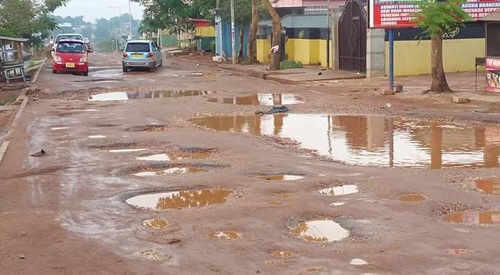
Poor roads, the bane of development
Efficient road infrastructure is essential for the economic growth of any country.
Reliable and dependable road infrastructure helps to facilitate the free movement of goods and people, creates employment, supports economic growth, enhances access to education and healthcare services, and connects people to families and places of entertainment.
Advertisement
It also aids in the fight against poverty.
In Ghana, road transport is one of the major keys that enhance economic potential. It is estimated that road transport alone accounts for 96 per cent of passenger and freight traffic and about 97 per cent of passenger miles in the country.
That is why sustainable development of our road infrastructure cannot be downplayed. For this reason, placing a lot more premium on developing our road infrastructure will definitely be a step in the right direction.
However, lately, there have been concerns across the country over the poor conditions of our roads. The country’s roads have seen further deterioration as a result of the heavy rains experienced in the last month or so.
The pothole-ridden roads in Accra and other parts of the country are increasingly becoming alarming and worrying, which also makes the cost of road transport high and very risky.
Successive governments have also faced a significant backlog of aging road infrastructure that needs to be rehabilitated and modernised, both in the urban and rural areas. Fortunately, Ghana has consistently been one of the countries in the top ranks of the African Development Bank’s Africa Infrastructure Development Index (AIDI), attracting funding for roads infrastructure.
That notwithstanding, there is still more road infrastructure deficit that require urgent attention from the government.
Among the many modes of transport, road transport is the commonest. However, poor road infrastructure hinders road transport and curtails societal development and mobility.
Rural areas are places for the production of primary goods and services worldwide. Increases in sufficient roads in the rural areas tend to increase access to agricultural inputs and market, communication and technology.
It is for this reason that the Daily Graphic will like to urge the government to invest more in road infrastructure so that the citizens can gain access to the remotest parts of the country in order to unlock the vast and untapped reservoir of productive potential in those areas.
The Daily Graphic views road transport as a vital element for improving societal welfare because it creates special impulses for economic growth and development.
Although the link between roads and human development is not well established, data from low-income countries demonstrate that communities living furthest from good roads experience higher levels of poverty, lower levels of school attendance and worse health outcomes.
It is one of the reasons there are frequent agitations by some community members for the government to fix their roads.
To address some of these challenges, the Daily Graphic recommends a routine monitoring and evaluation mechanism to be built into the road infrastructure investment policies to ensure that road construction carried out by contractors are properly done.
Again, the government must always follow up on reports to check whether projects being implemented are done properly. Standards assessments should be the number one priority.
The government also needs to train selected teams well to be able to successfully face the challenges of implementing road infrastructural policies.
It is our view that when adequate investment is made into the road sector with proper monitoring and evaluation, the issue of poor roads and potholes will be a thing of the past.



